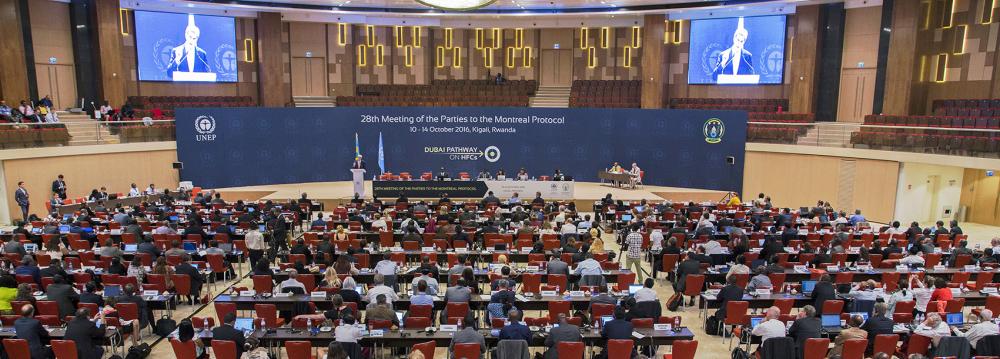In an effort to combat climate change, representatives of 197 countries meeting in Rwanda have agreed to limit the use of HFC gases commonly used in refrigeration.
A majority of the world’s nations meeting in Rwanda agreed on Saturday to a wide-reaching global deal on reducing greenhouse gases used in refrigerators and air conditioners.
“The amendment and decisions are adopted,” Rwanda’s Minister of Natural Resources Vincent Biruta announced to loud cheers, following overnight talks in the country’s capital Kigali, AFP reported.
The deal on limiting the use of hydrofluorocarbons (HFCs) divides countries into three groups with differing deadlines to scale back on the use of the factory-made gas, which can be 10,000 times more powerful than carbon dioxide.
According to the pact, developed nations, including the United States—the world’s second worst polluter—and many European countries will gradually reduce their HFC emissions by 2019.
A second group of over 100 developing nations, including China—the world’s top polluter—will start reducing in 2024.
A third, smaller group of countries, including India, Pakistan and some Persian Gulf states, will start later in 2028, after arguing that their economies need more time to grow. The date is three years earlier than India had first proposed.
A Test of Global Will
The talks on HFCs have been viewed as a first test of global resolve since the Paris Agreement was reached last year. A sufficient number of countries ratified the agreement earlier this month and it will come into effect in November.
“This is a huge win for the climate. We have taken a major concrete step in delivering on the promises we made in Paris last December,” said Miguel Arias Canete, a commissioner with the European Union, in a statement ahead of the agreement’s adoption.
Negotiating countries were embroiled in a debate on how quickly to phase out HFCs. The US, who was led by Secretary of State John Kerry, and other western countries pushed for quick action, while other countries such as India asked for more time for their economies to adjust.
Many African nations and small island states also urged for quick action, saying their countries face the biggest threat from climate change.
“It may not be entirely what the islands wanted, but it is a good deal,” the minister-in-assistance to the president of the Marshall Islands, Mattlan Zackhras, said in a statement. “We all know we must go further and we will go further.”
The Dangerous Greenhouse Gas
Environmental groups hoped that Saturday’s deal could reduce global warming by a half-degree Celsius by the end of this century.
Changing to HFC alternatives such as ammonia, water or other gases called hydrofluoroolefins, however, could be expensive for developing countries with extreme summer temperatures.
HFCs were first introduced in the 1990s to replace chlorofluorocarbons (CFCs) after scientists realized they were destroying the ozone layer. The level in the upper stratosphere protects Earth from the Sun’s harmful rays.
However, HFCs turned out to be catastrophic for global warming. Although they are safe for the ozone layer, they are thousands of times worse for trapping heat than carbon dioxide.


